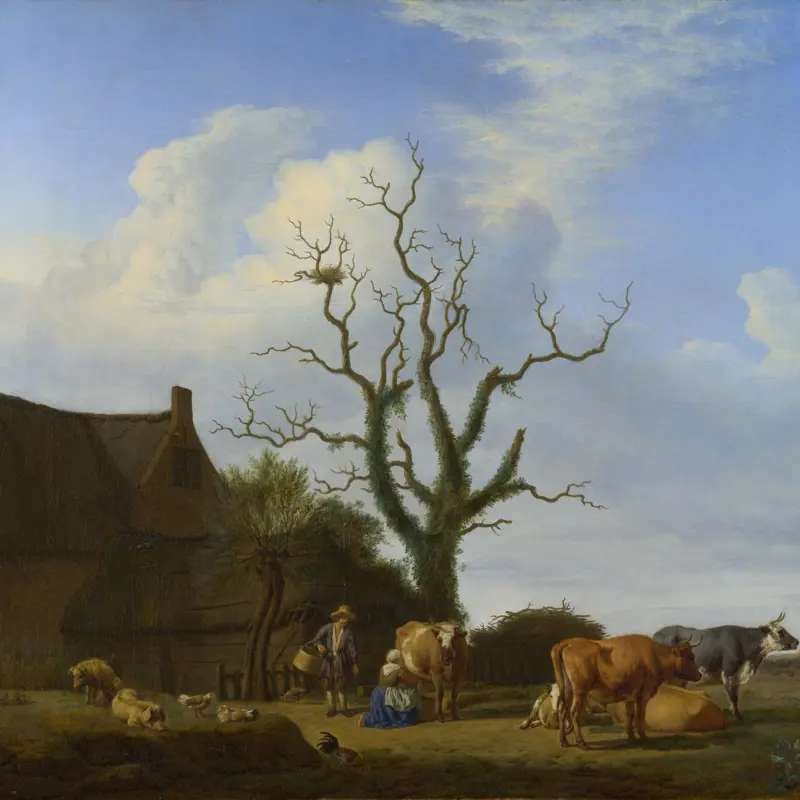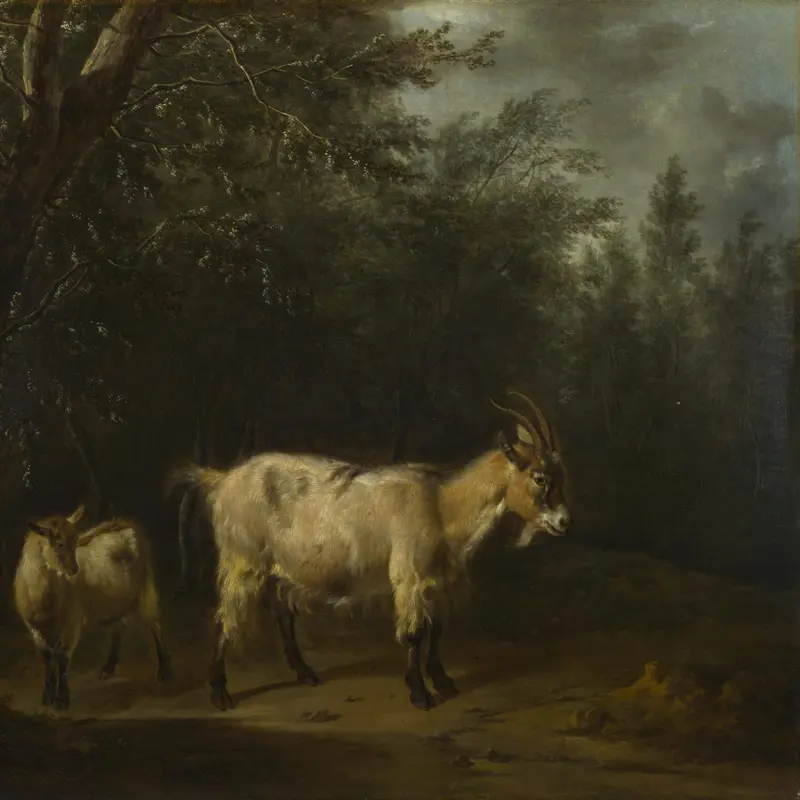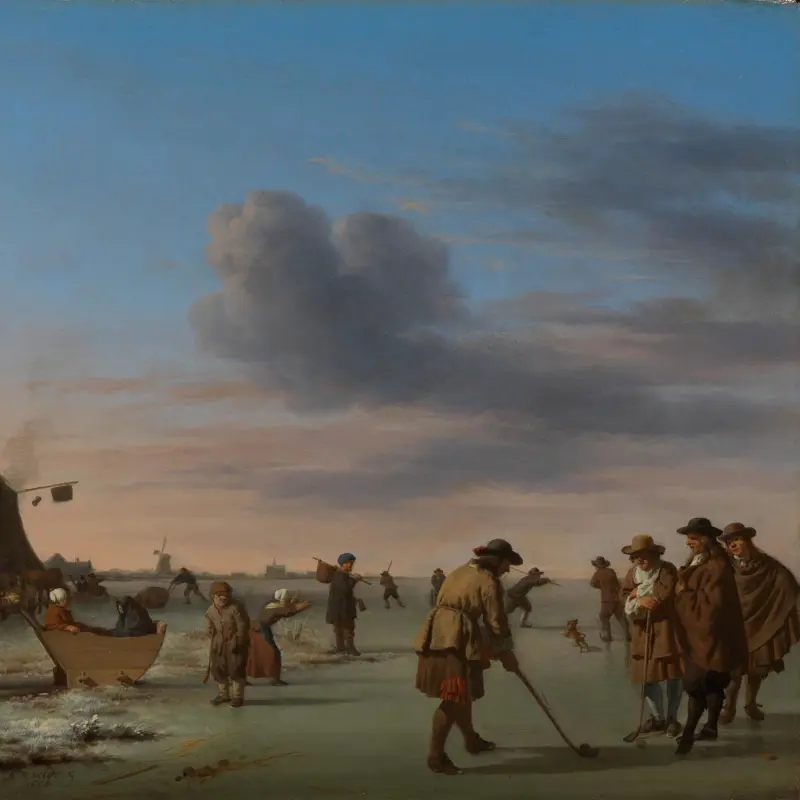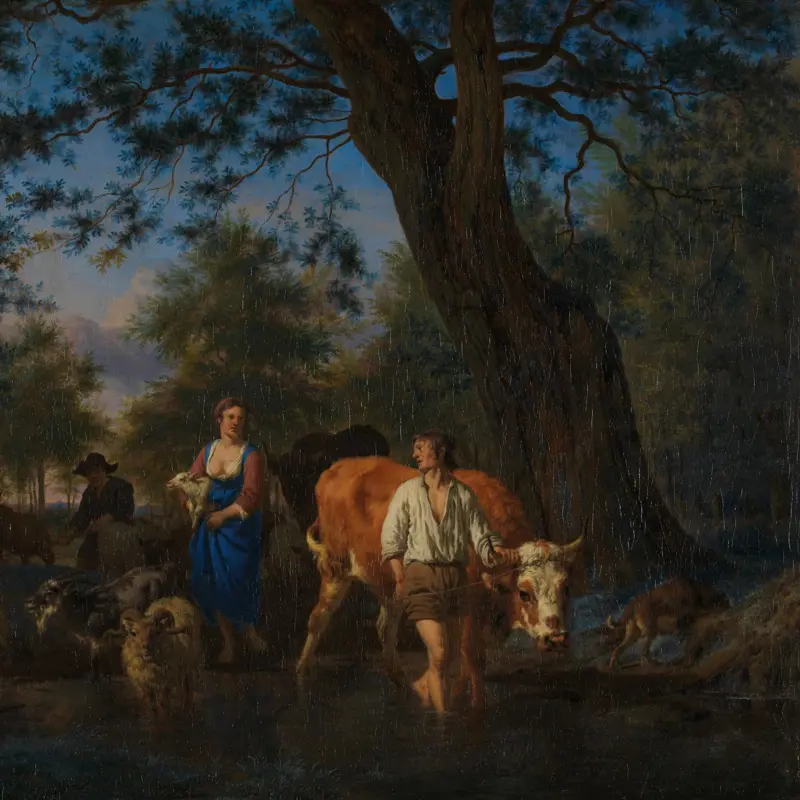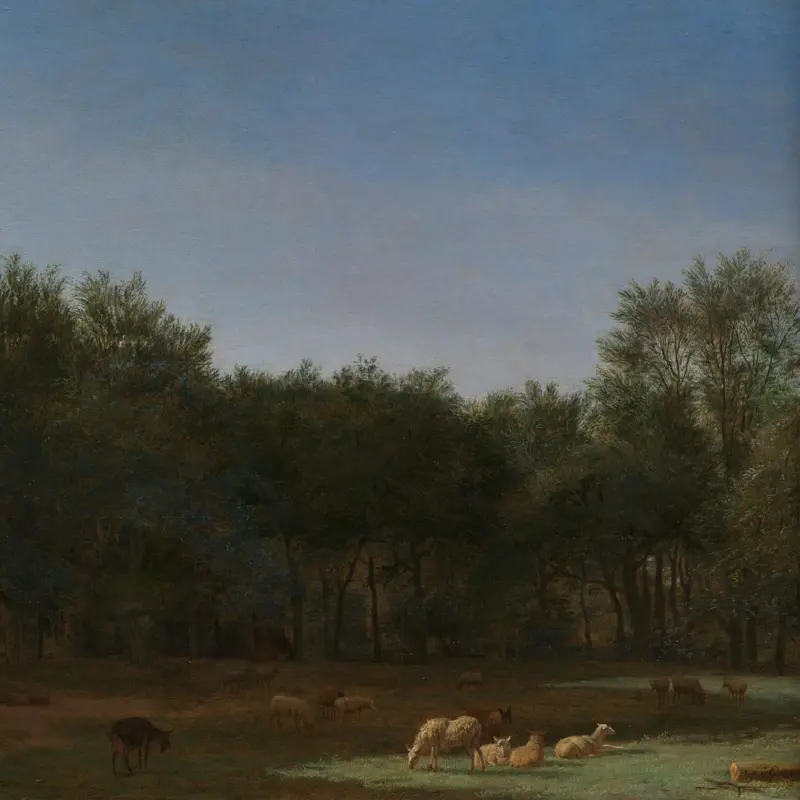Adriaen van de Velde, 'Animals near a Building', 1663
About the work
Overview
Adriaen van de Velde’s pastoral scenes are, like this one, almost always tranquil and serene. They were designed to be easy to live with, and to give city dwellers a sense of being in touch with the countryside and traditional life. But although the paintings are tranquil there’s a sense of energy and movement hidden within them, and it’s a key part of their appeal.
In this picture, the statuesque bay horse is placed centrally; the strong, swooping line of its back dominates the picture and hints at the animal’s power. The line leads the eye past its feathery mane ruffled in the wind, and up to the fast moving clouds overhead. One of them catches the sun as it edges between the darker clouds that move away on either side of it to make way for the sparkling blue of the sky.
Key facts
Details
- Full title
- A Bay Horse, a Cow, a Goat and Three Sheep near a Building
- Artist
- Adriaen van de Velde
- Artist dates
- 1636 - 1672
- Date made
- 1663
- Medium and support
- Oil on canvas
- Dimensions
- 31 × 37 cm
- Inscription summary
- Signed; Dated
- Acquisition credit
- Wynn Ellis Bequest, 1876
- Inventory number
- NG983
- Location
- Not on display
- Collection
- Main Collection
- Previous owners
Provenance
Additional information
Text extracted from the ‘Provenance’ section of the catalogue entry in Neil MacLaren, revised and expanded by Christopher Brown, ‘National Gallery Catalogues: The Dutch School: 1600–1900’, London 1991; for further information, see the full catalogue entry.
Bibliography
-
1854British Institution, Catalogue of Pictures by Italian, Spanish, Flemish, Dutch, French and English Masters, with which the Proprietors have Favoured the Institution, London 1854
-
1960Maclaren, Neil, National Gallery Catalogues: The Dutch School, 2 vols, London 1960
-
1990I. Gaskell, Seventeenth Century Dutch and Flemish Paintings, ed. S. de Pury, London 1990
-
1991Maclaren, Neil, revised by Christopher Brown, National Gallery Catalogues: The Dutch School, 1600-1900, 2nd edn (revised and expanded), 2 vols, London 1991
-
2001
C. Baker and T. Henry, The National Gallery: Complete Illustrated Catalogue, London 2001
About this record
If you know more about this work or have spotted an error, please contact us. Please note that exhibition histories are listed from 2009 onwards. Bibliographies may not be complete; more comprehensive information is available in the National Gallery Library.

